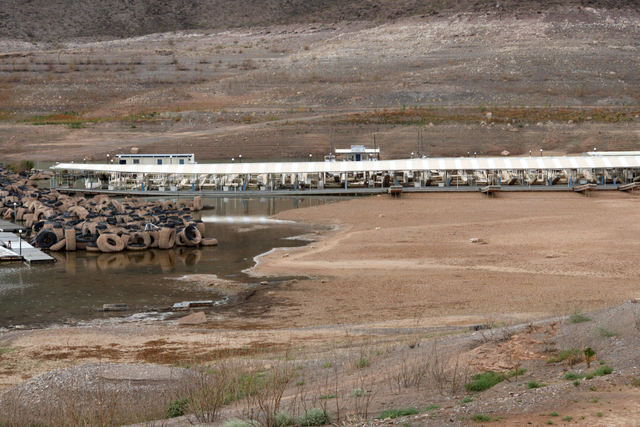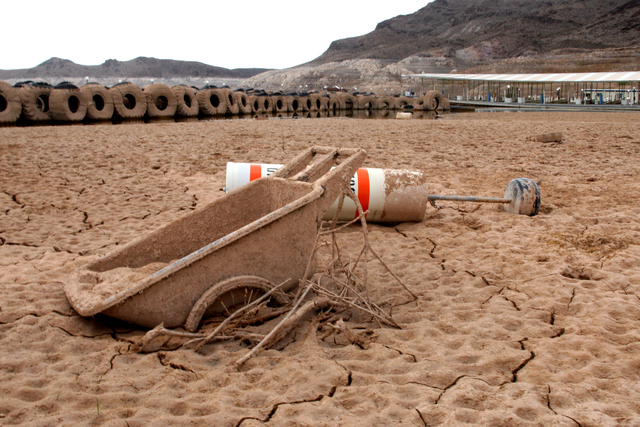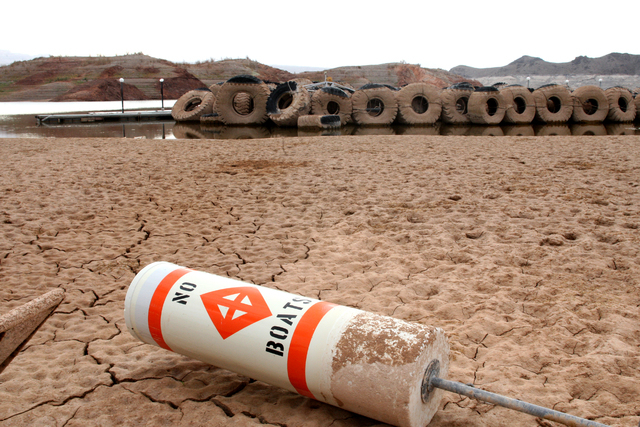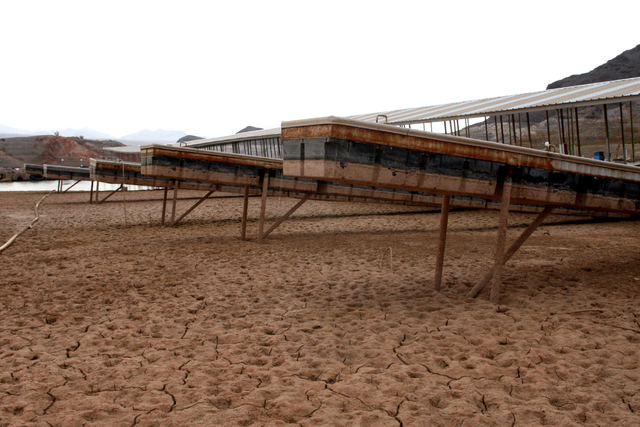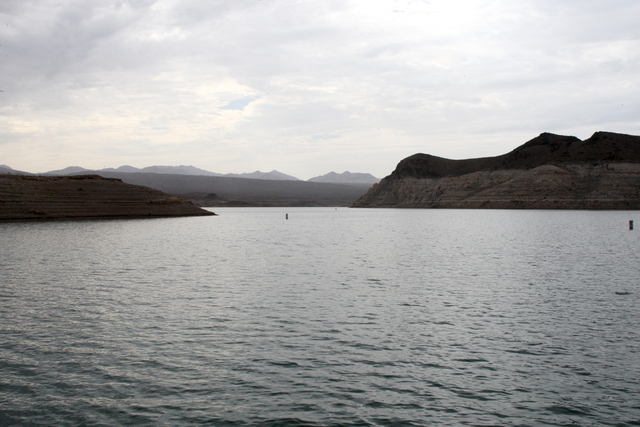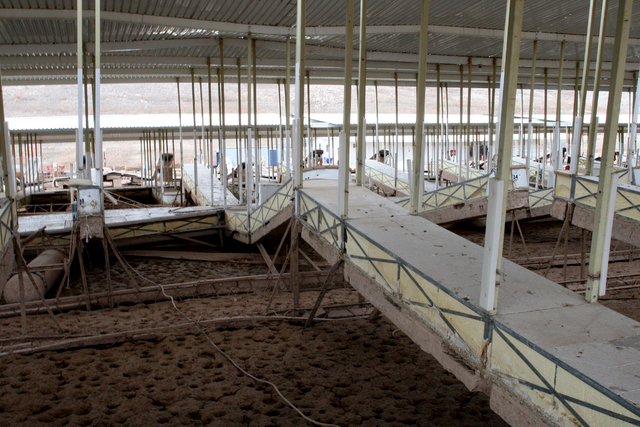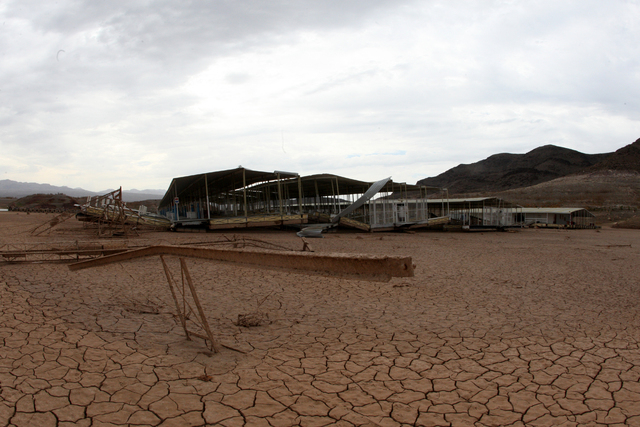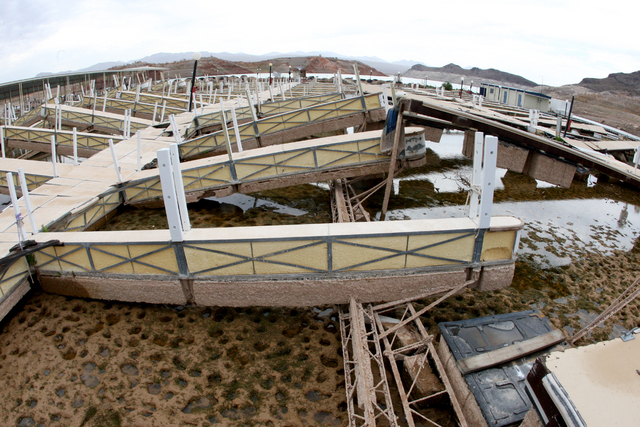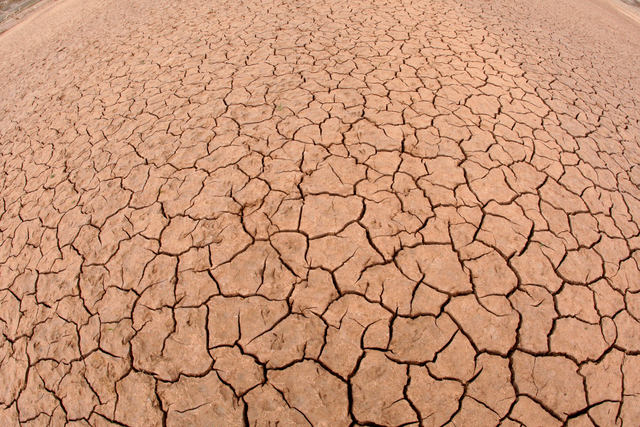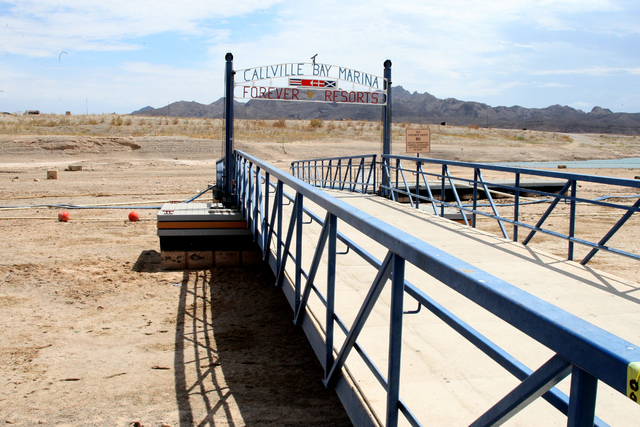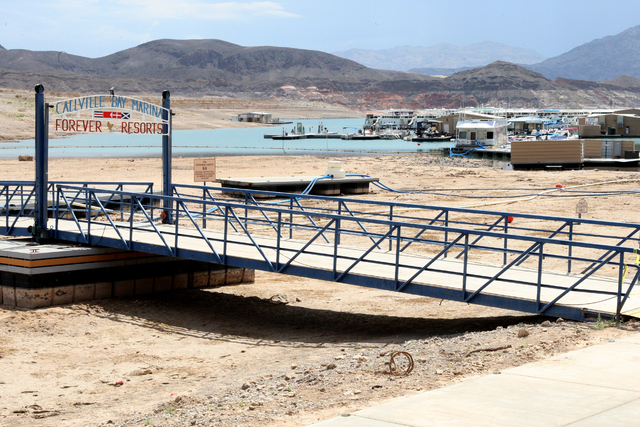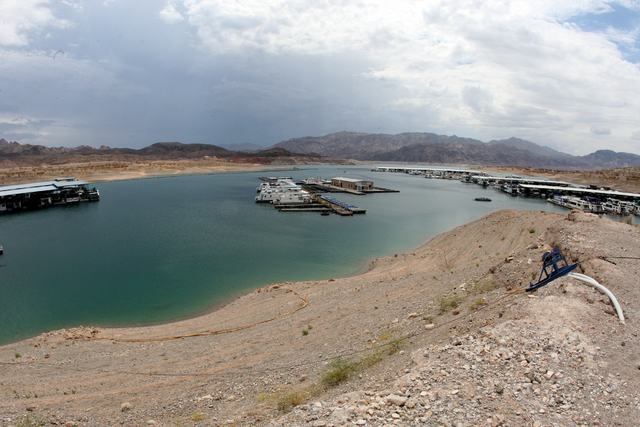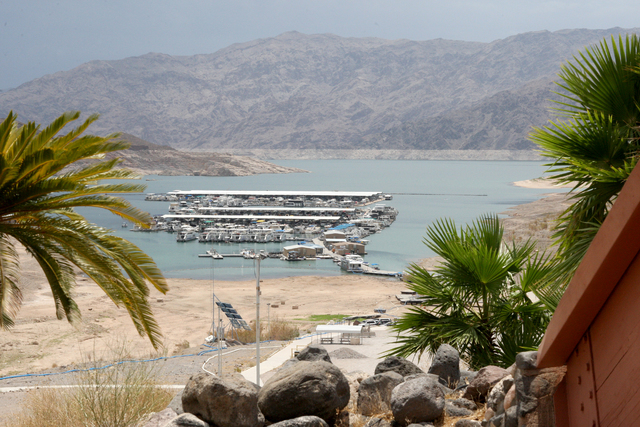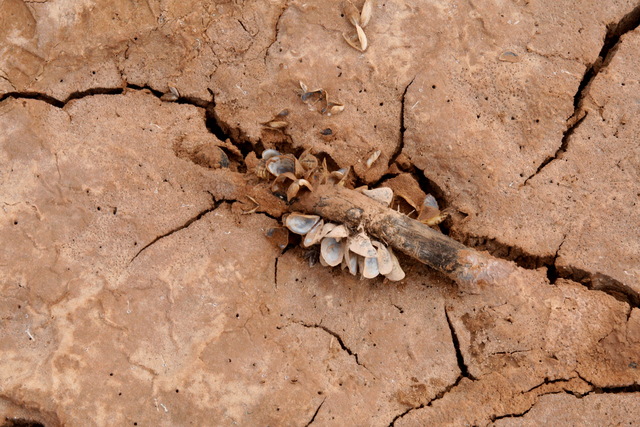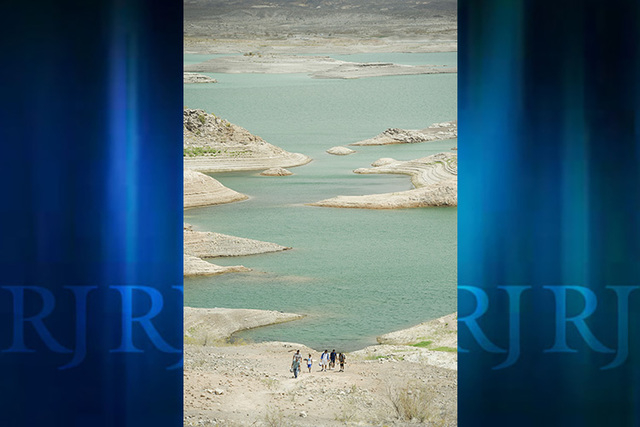Lake Mead sinks to a record low
A buoy rests on its side in a field of cracked mud crisscrossed with the tracks of coyotes, birds and bighorn sheep.
“NO BOATS,” the buoy warns.
Nearby, what’s left of Echo Bay Marina slumps on the shore, its empty slips open wide to something no one has seen since the Great Depression.
Lake Mead sank to a record this week, its surface nudging downward a few tenths of an inch late Wednesday night to 1,081.82 feet above sea level.
The last time the lake was this low, the town of St. Thomas still had a post office.
In late spring of 1937, water from the once-wild Colorado River was still rising steadily behind the new Hoover Dam, inundating empty desert as it pushed toward Moapa Valley. By June of the following year, St. Thomas would be under water, but Mother Nature and human thirst couldn’t keep it there.
In 1983, when the lake was as full as it’s ever been, the ruins of the town were under about 80 feet of water. Today, you can’t even see the lake from St. Thomas.
The past 15 years have been especially hard on the nation’s largest man-made reservoir. Lake Mead has seen its surface drop by more than 130 feet amid stubborn drought in the mountains that feed the Colorado River. The unusually dry conditions have exacerbated a fundamental math problem for the river, which now sustains 30 million people and several billion dollars worth of farm production across the West but has been over-appropriated since before Hoover Dam was built.
Andy Ameigeiras and two of his friends spent Wednesday night and Thursday morning hooking carp, catfish and stripers from the rocky shore of Echo Bay. He said the water had “easily” dropped three to five feet since the last time they fished there, just four weeks ago.
“I walked out there and I wasn’t sure I was in the right spot,” the Las Vegas man said. “It’s definitely startling to see how far it’s dropping.”
The latest low water mark comes less than four years after the previous record of 1,081.85 was set on Nov. 27, 2010.
RECORDS UPON RECORDS
Wednesday’s record is unlikely to last. Forecasters expect Lake Mead to hit another new low today, then break that mark Saturday, and so on for the next several weeks.
The streak of all-time lows should end by late August, when current projections from the U.S. Bureau of Reclamation call for the reservoir to tick up slightly. Then it should inch down again, bottoming out sometime in November before starting back up as downstream water users cut their orders heading into winter.
Bureau officials acknowledged this week’s milestone but said it won’t impact operations at Hoover Dam.
“We will meet our water orders this year, and we are not projecting a shortage condition in 2015,” said Terry Fulp, the Boulder City-based director for the Bureau’s Lower Colorado Region. “We continue to closely monitor the projections of declining lake levels and are working with stakeholders throughout the Lower Basin to keep as much water in Lake Mead as we can through various storage and conservation efforts.”
Annual releases from Lake Powell and Lake Mead are governed by guidelines established in 2007. Under those rules, the Secretary of the Interior will declare a shortage and cut water deliveries to Nevada and Arizona if Lake Mead is projected to fall to 1,075 feet above sea level on Jan. 1 of a given year. Current projections call for the reservoir to start next year 23 feet lower than it was on Jan. 1 of this year but safely above the shortage line by about 8 feet.
Lake Powell, meanwhile, is expected to start next year 21 feet higher than it was at the beginning of 2014. Right now, the reservoir on the Utah-Arizona border is swelling by almost a foot a day as the last of the mountain snow melts into the Colorado River and its tributaries.
Forecasters are predicting another big drop at Lake Mead next spring, as the lake stair-steps its way down to elevation 1,069, and below. By June 2016, the reservoir could hit 1,064, just 14 feet away from shutting down one of two intake pipes the Southern Nevada Water Authority uses to deliver 90 percent of the Las Vegas Valley’s water supply.
With that in mind, the wholesale water agency is rushing to complete a new intake that will reach deeper into the lake. The $817 million project has seen its schedule slip by more than two years, but is on track to finish next summer.
“We feel confident the third intake will be complete before we lose Intake No. 1,” authority spokesman Bronson Mack said.
The prospect of the first federal shortage declaration on the Colorado River doesn’t seem to worry the authority. Mack said the community has already conserved more than enough water to cover the 4 percent cut Nevada would take under a shortage.
“We don’t have to bridge that gap because we already bridged that gap,” he said.
DOWN BUT NOT OUT
Lake Mead’s decline has been a major headache for the National Park Service.
For every two-foot drop in the water level, the shoreline can recede 60 feet or more. Already the shrinking reservoir has left some boat ramps high and dry, and has pushed marinas into deeper water or closed them altogether.
A decade ago, Lake Mead was home to nine boat launch ramps and six marinas. Six ramps and three marinas remain open today.
Echo Bay, on the lake’s Overton Arm about 60 miles northeast of Las Vegas, is the latest victim. The marina shut down last year, and the main launch ramp was forced to close earlier this year. Boaters now have to drive a mile down a dirt road to reach an alternate ramp at the end of a spit of land that juts into the water.
Several hundred yards of dry land separate the bottom of the main boat ramp from the remains of the marina, where a jumble of big truck tires lashed together sits in the mud, a breakwater with no water to break.
Christie Vanover, spokeswoman for Lake Mead National Recreation Area, said pieces of the marina have been relocated but much is destined for the scrap yard.
Since the drought began on the Colorado River, the National Park Service has spent roughly $40 million at Lake Mead to extend ramps, roads and utility lines; build new parking lots; reposition docks and navigational aids for boaters; and mark new hazards on land and water. And more costly work lies ahead — roughly $2.1 million of it for every 10-foot drop, just to extend launch ramps.
The plunging water line has also hurt the private companies that operate the lake’s marinas under Park Service contracts. In addition to the day-to-day challenges of reconfiguring their water-based operations, marina operators have to contend with the public misconception — fueled by stories like this one — that Lake Mead is running dry, Vanover said.
While access to the lake has grown more difficult in recent years, she said, there is still more than 125 square miles of open water and roughly 400 miles of shoreline to explore.
The fish are still biting, too, though even anglers like Ameigeiras can’t help but consider the bigger picture.
“I don’t worry so much about fishing. I worry about where all this water is going,” he said Thursday as he watched his friends clean their catch at the top of Echo Bay’s bone dry boat ramp. “There’s more important things to worry about than some fish.”
Contact Henry Brean at hbrean@reviewjournal.com or 702-383-0350. Follow @RefriedBrean on Twitter.



